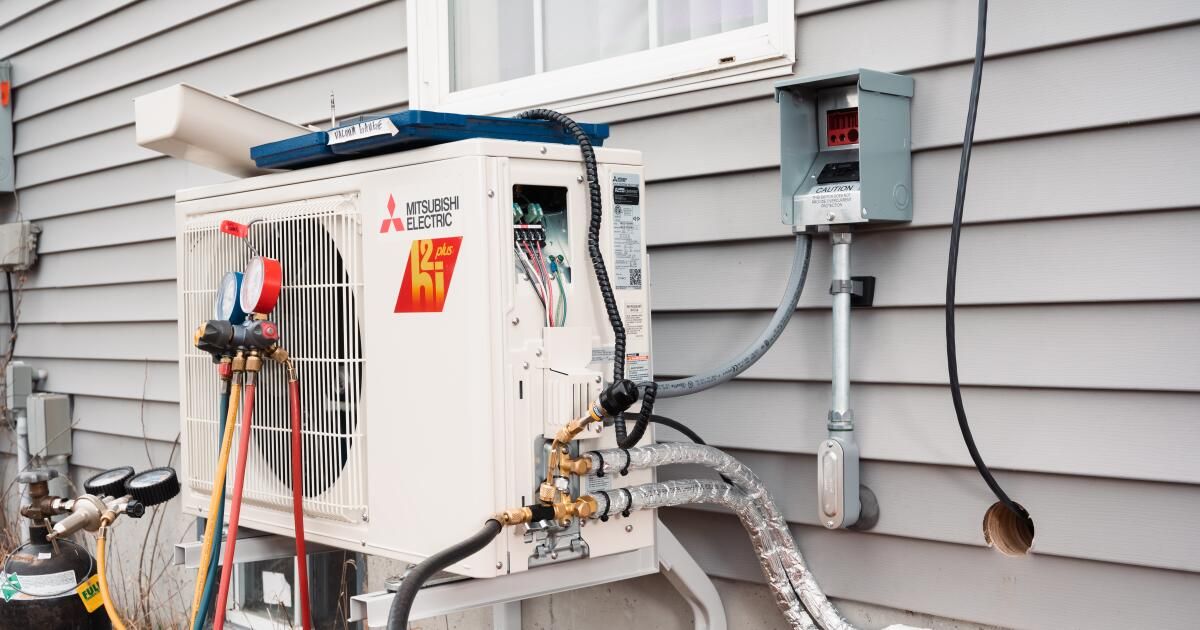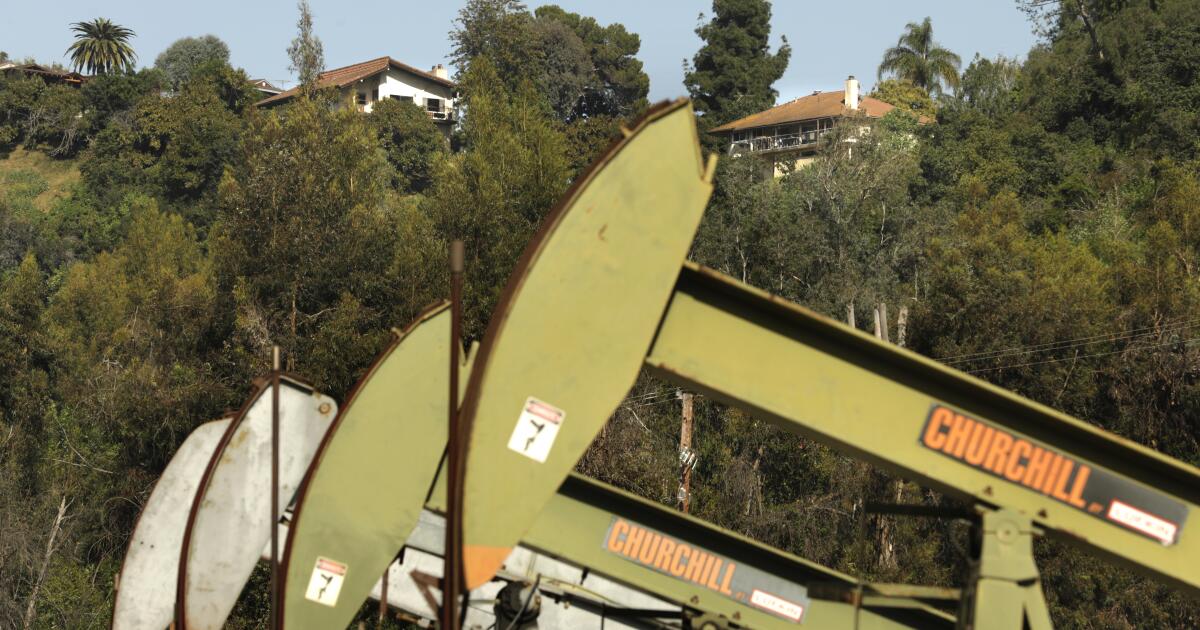As global carbon emissions from human activity reach a its highest point Last year, my family reduced emissions from our home and cars to zero while earning an 11% tax-free return on investment. That’s more than double the performance of Municipal bonds. And it is a good time to achieve this goal, weeks after an oil executive addressed the recent United Nations climate summit in Dubai. rehash the trope that eliminating fossil fuels would “return the world to caves.”
Our cave in Northern California has five bedrooms, large windows, two car garage, and a hot tub. We have been fortunate to be able to afford the investments necessary to make it more environmentally friendly. But the process was harder and slower than it should be.
I spent my career at the Department of Energy National Laboratory System investigating how to reduce greenhouse gas emissions. I know that a third of energy-related emissions in the United States come from homes and personal vehicles. Moving into a late 1970s house presented me with a great opportunity to lead by example.
The process seemed simple. During routine replacements and remodels, we maximize the efficiency of our appliances and lighting, seal air leaks, insulate floors and ceilings, upgrade windows, install heat pumps to heat the house and produce hot water, and switch to electric cars . These improvements reduced our energy use by an astonishing 88%. Converting the remaining fuel used into electricity reduced our carbon emissions to just 3% of original levels.
Since our property is surrounded by large carbon-storing redwoods, on-site solar was not an option. Instead, we get to zero by switching to a combination of solar and geothermal electricity provided by utilities. No cunning Carbon offsets were required and there was virtually no sacrifice. Quite the opposite: Our home and auto energy bills dropped by about $11,000 a year.
But, as Kermit said, it’s not easy being green. Although there was ample technology available on the market, decidedly human challenges hindered our use of it.
In the 15 years we spent making our home greener, the first challenge was the often insufficient, inscrutable or inaccurate information from product manufacturers, sales representatives and energy suppliers, particularly about how much energy we could save. It was also difficult to find available incentives and organize applications.
The projects required a lot of supervision, because ambitious green projects require special attention, curiosity and communication. If I hadn’t “commando crawled” under the house and risked roof vertigo, I never would have discovered that the new floor insulation wasn’t nearly as thick as we’d paid for or that the roofers had left out the insulation and had left huge air spaces through which the heat passed. the loss is greater. Heating companies recommended oversized equipment. The window salespeople made recommendations that would have seriously undermined our energy savings. The list goes on.
Electrification brought new problems. Most electricians I spoke to preferred panel “upgrades” that cost $5,000 or more to accommodate the switch from fossil fuels to electricity rather than helping us more cost-effectively trim and shift energy needs to reduce or avoid the expense altogether.
Then we had to deal with our cars, which produced about a third of our carbon footprint. After reporting that our first electric vehicle had a lower driving range than advertised, I was misled by customer service and later learned that I may have been among the thousands of people who had been misled into a secret.”diversion equipment”to deflect such complaints. it turned out user interface It concealed that heating and cooling were often activated inadvertently, along with other invisible sources of energy leakage.
Inconvenience aside, the real question was: Are all these improvements worth it? The math isn’t always simple, so consumers could use a little guidance. Unfortunately, I did not find a single dealer who offered these calculations. Most were skeptical and ignored juicy tax cuts and credits; Sometimes his mistakes or lack of skill increased the costs of the project. The car dealers knew about the tax incentives, but were speechless when I asked them about operating expenses. So I did the math and found that our improvement package would pay for itself in nine years, a return that could motivate many homeowners and help sellers close deals.
Ecological measures do not always cost more than traditional ones. For example, insulating and upgrading windows reduced our heating needs and therefore the size and cost of the heating system required. Thanks to these factors, along with the incentives provided in President Biden’s Inflation Reduction Act, a conventional gas boiler and water heater would actually have cost more to install than the high-efficiency electric heat pump system and climate friendly that performs both functions. Most heat pumps also provide air conditioning. There is also evidence that making a house greener increases resale value.
After incentives, our electric vehicle purchase costs were at par with those of comparable gasoline cars. Even better, with our utility’s move to EV-specific electric rates, we were paying the equivalent price of gasoline at just $1.50 per gallon. Thanks to the lower rates, our home’s total electric bills didn’t increase at all. As visionary physicist Amory Lovins has long said sayingEnergy efficiency is not just a free lunch, you also get paid to eat.
A broader cost-benefit analysis reveals other advantages. Electric vehicles are quiet and convenient to charge overnight at home once that infrastructure is in place, and they accelerate faster than gasoline cars. Single driver access to the shared lane isn’t bad either. Likewise, our home is more comfortable. The induction cooktop looks sleeker, cooks faster, and is easier to use and clean than gas models; In addition, we get rid of indoor pollution caused by gas flaring.
We have also reduced the pollution we impose on others and the planet. Eliminate our annual carbon dioxide footprint of 27 tons, equal to the annual emissions of around 15 high-performing people hybrid cars – is another welcome return on investment.
Fortunately, the United States Government and NGO They are stepping up green workforce development, a pressing need if our nation is to meet decarbonization goals. Under the specter of climate change, we can (and has to — abandon carbon emissions long before the messy mid-century goal set by world leaders in Dubai. If consumers don’t literally take control of their power, and policymakers, product manufacturers, and marketers don’t make it easier for them, climate change could send us back to the caves.
Evan Mills is a retired senior scientist and affiliate of the Department of Energy’s Lawrence Berkeley National Laboratory and a research affiliate of the UC Berkeley Energy and Resources Group. He was lead author of the Intergovernmental Panel on Climate Change.












